
There were no big changes in the browser landscape in March. The top three held their positions, and Windows 8 continues to grow at a sluggish pace. The biggest change? Internet Explorer 10 almost doubled its market share, thanks to the late February release of its Windows 7 version.
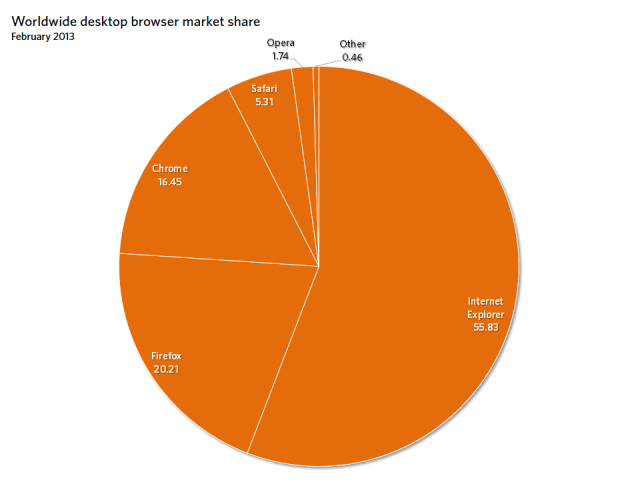
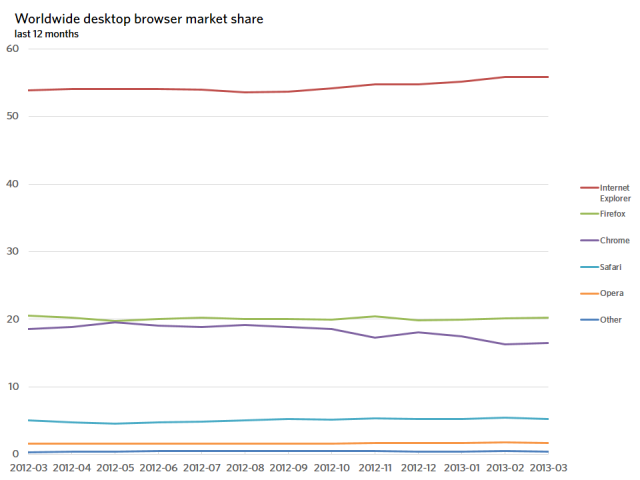
On the desktop, Internet Explorer saw no meaningful change, at 55.83 percent for the month compared to 55.82 last month. Firefox and Chrome both edged up a little, gaining 0.09 and 0.18 points for shares of 20.21 and 16.45 percent respectively. Safari and Opera both nudged downward, losing 0.11 and 0.08 points to drop to 5.31 and 1.74 percent respectively.
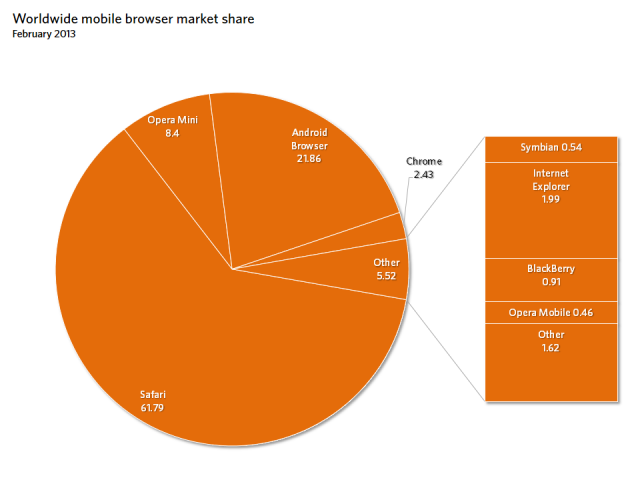

In the mobile space, Safari bounced back, up 6.38 points to 61.79 percent. After a surprising high last month, Opera Mini fell 4.32 points to 8.4 percent. Symbian likewise dropped from an unusual high, losing about two thirds of its February usage. It fell 0.83 points to 0.54 percent. Android Browser was down, losing 0.96 points for a share of 21.86 percent.
Mobile Internet Explorer posted its eighth straight gain, adding 0.41 points for a 1.99 percent share.

It's the version breakdown that shows the biggest March changes. Chrome and Firefox's graphs show a familiar story: rapid uptake of the current version for most users, but a small tail of users who are stuck on the older versions.
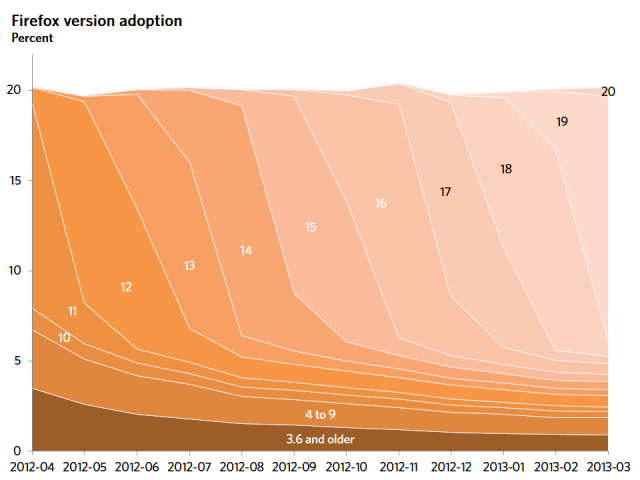
Firefox still appears to be suffering attritional losses with each update, with a greater proportion of users getting stuck on old versions.
It also seems that the effort to create Extended Support Releases—relatively long-lived versions that receive security updates without concomitant feature updates—has been more or less wasted, with neither ESR version (10 or 17) showing any significant level of usage. There are more users of Firefox 16 and as many users of Firefox 14—both obsolete, unsupported, and no longer receiving security fixes—than there are of Firefox 17.
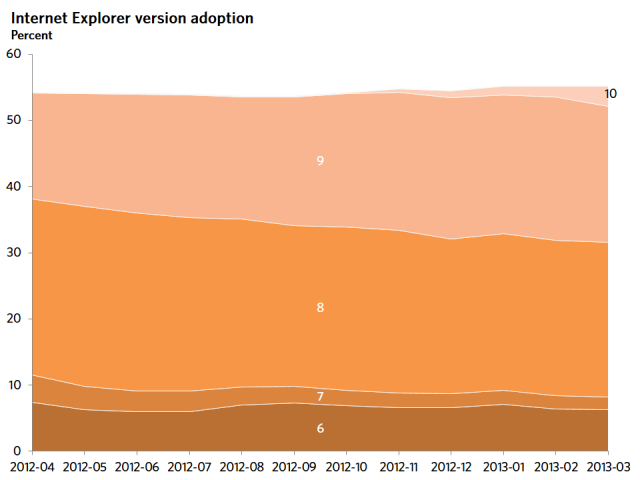
For Internet Explorer, we see the first fruits of a new Microsoft policy. When Redmond shipped Internet Explorer 10 for Windows 7, it for the first time made the browser an automatic update that will install automatically on systems using the default Windows settings. (Internet Explorer 9 did get shipped as an automatic update, but only some months after the original release.)
One month on, it looks like this is immediately having an impact. After five months on the market as a Windows 8-only browser, Internet Explorer 10 had taken a 1.6 percent market share. After one month of availability on Windows 7 as an automatic update, that's grown to 2.95 percent. The automatic update is currently being enabled on a market-by-market basis. As the switch is thrown in more markets, we can only expect this to grow.
No comments:
Post a Comment
Let us know your Thoughts and ideas!
Your comment will be deleted if you
Spam , Adv. Or use of bad language!
Try not to! And thank for visiting and for the comment
Keep visiting and spread and share our post !!
Sharing is a kind way of caring!! Thanks again!